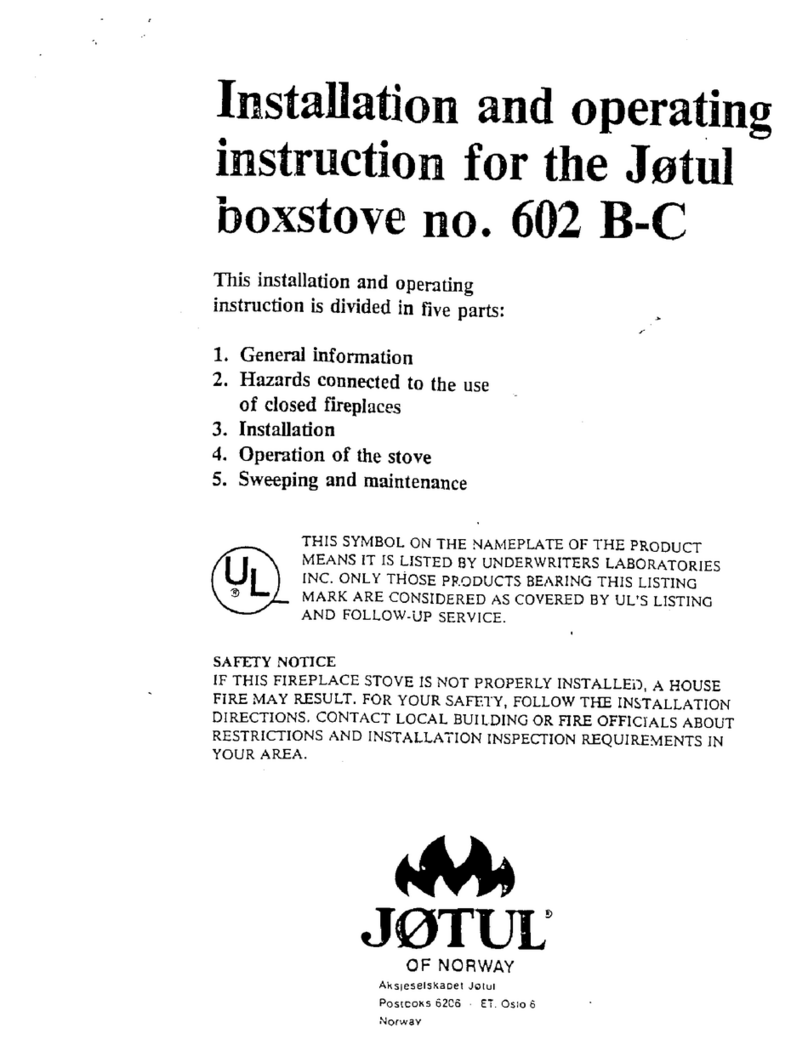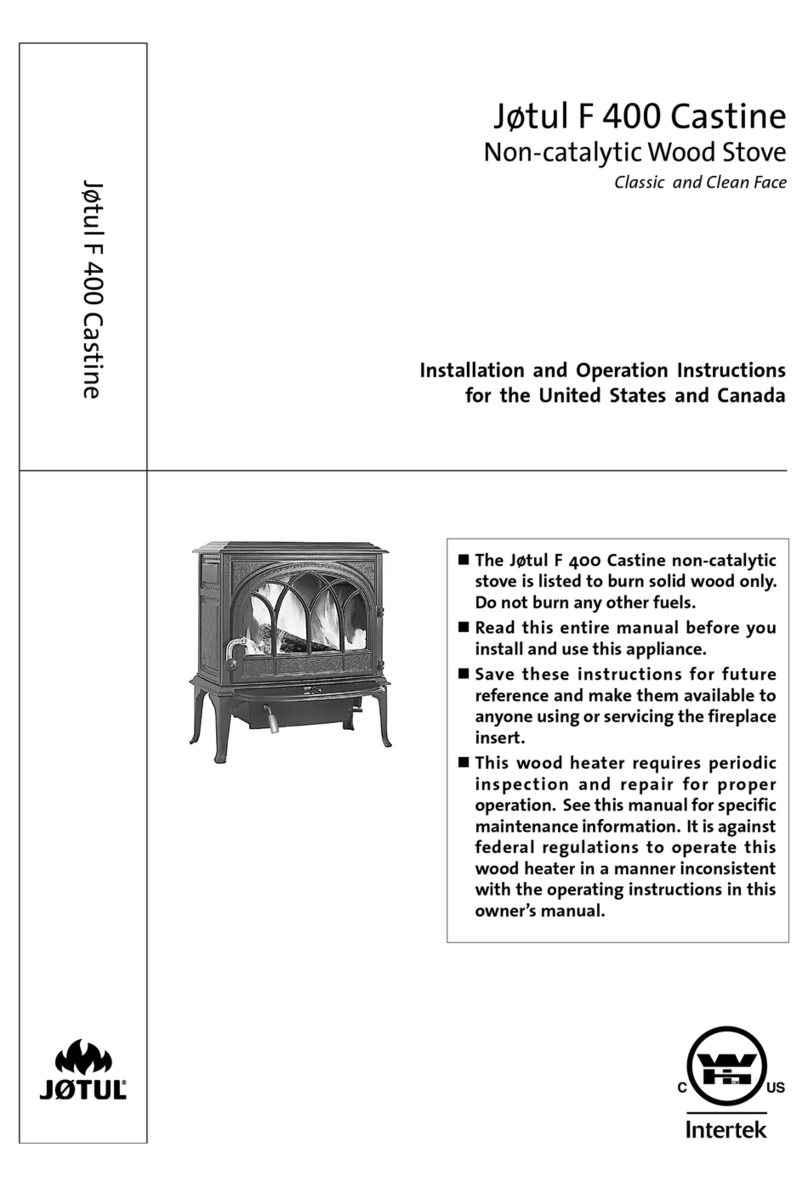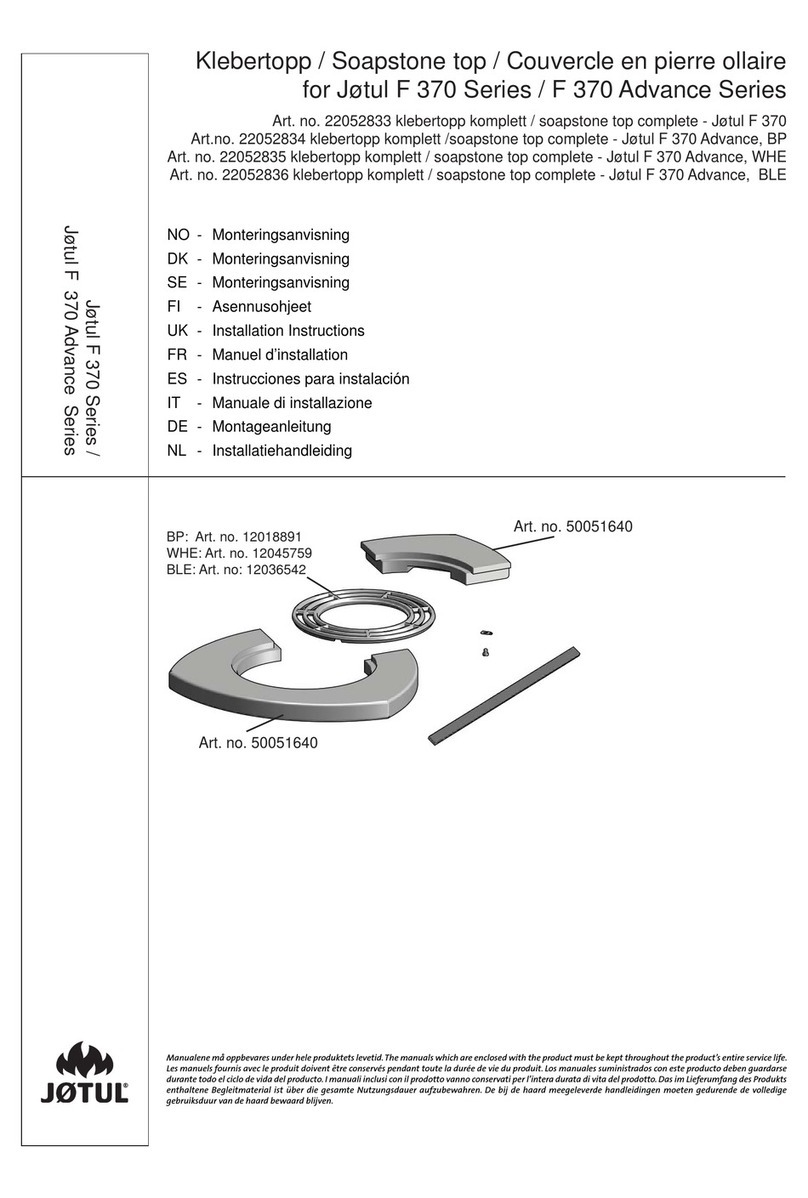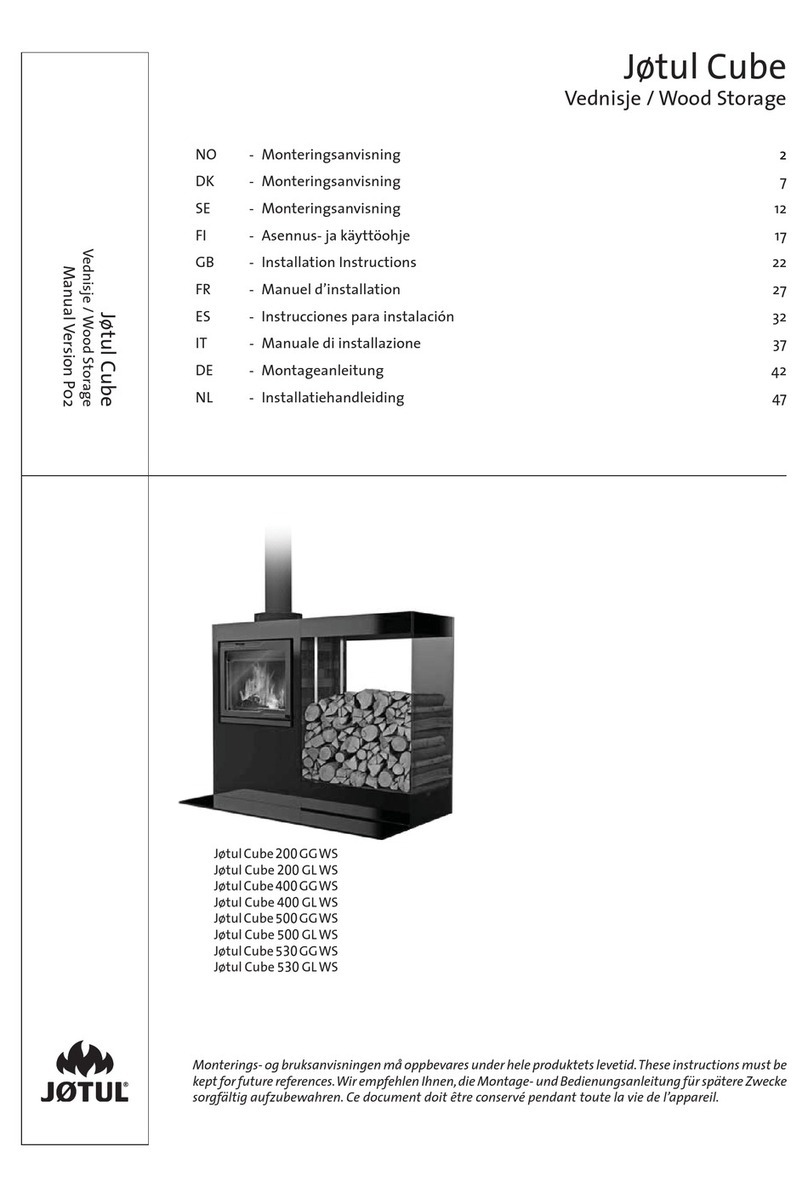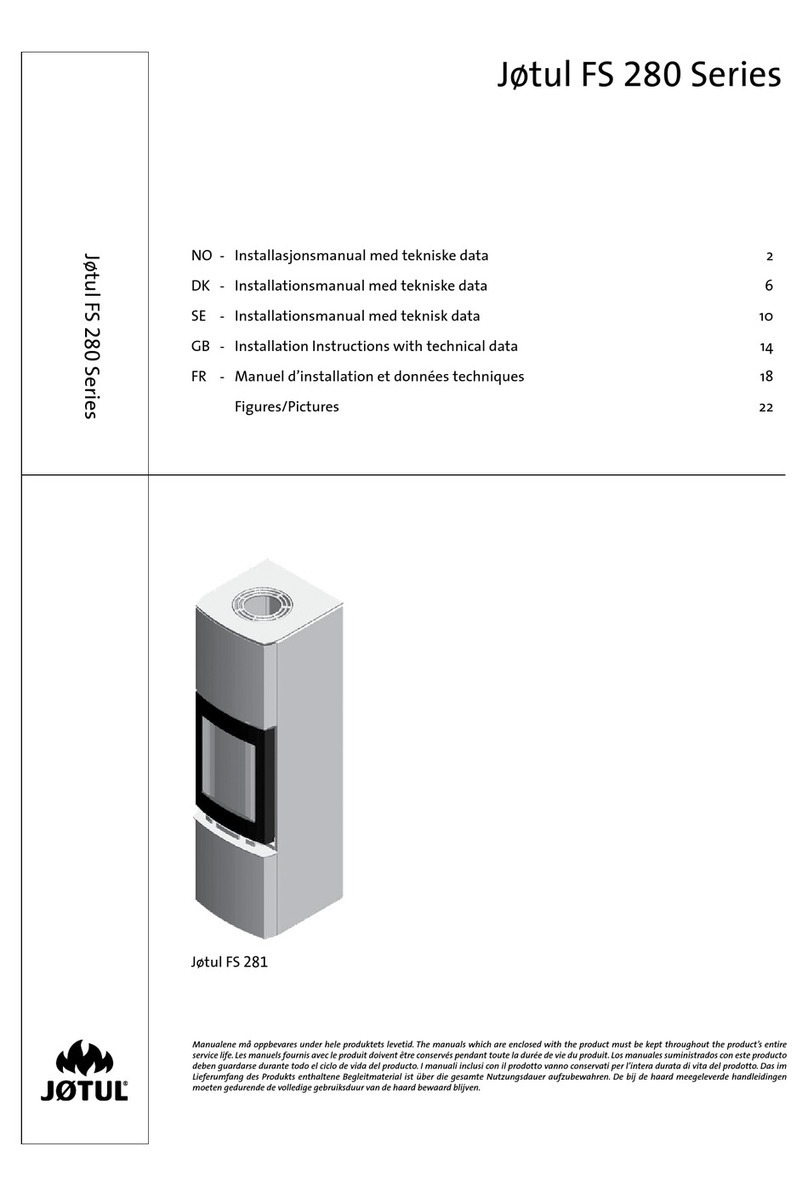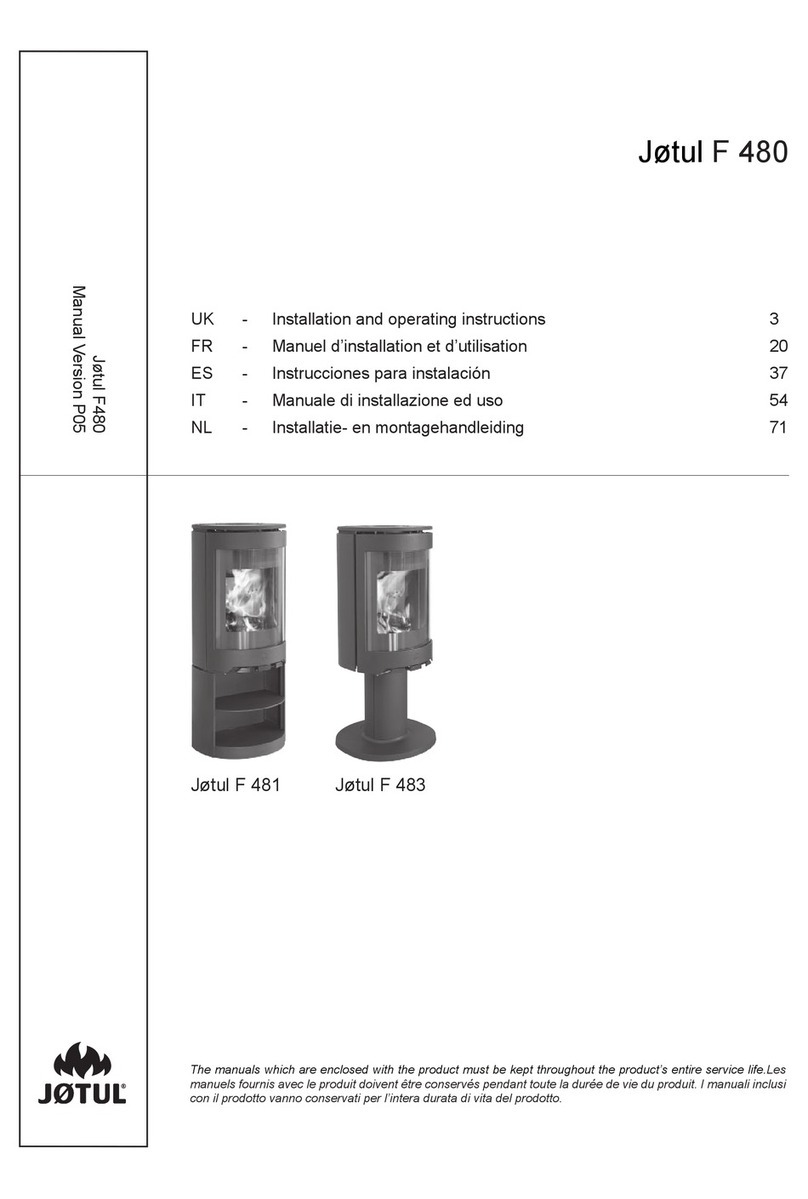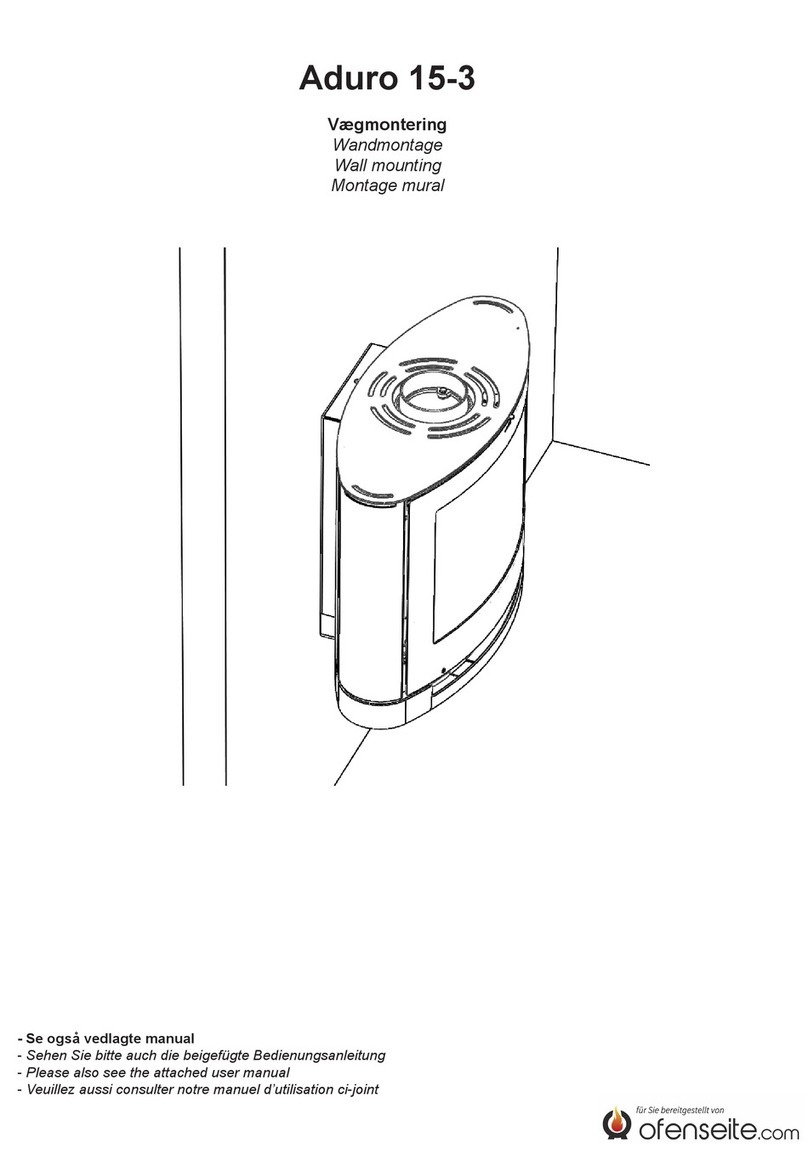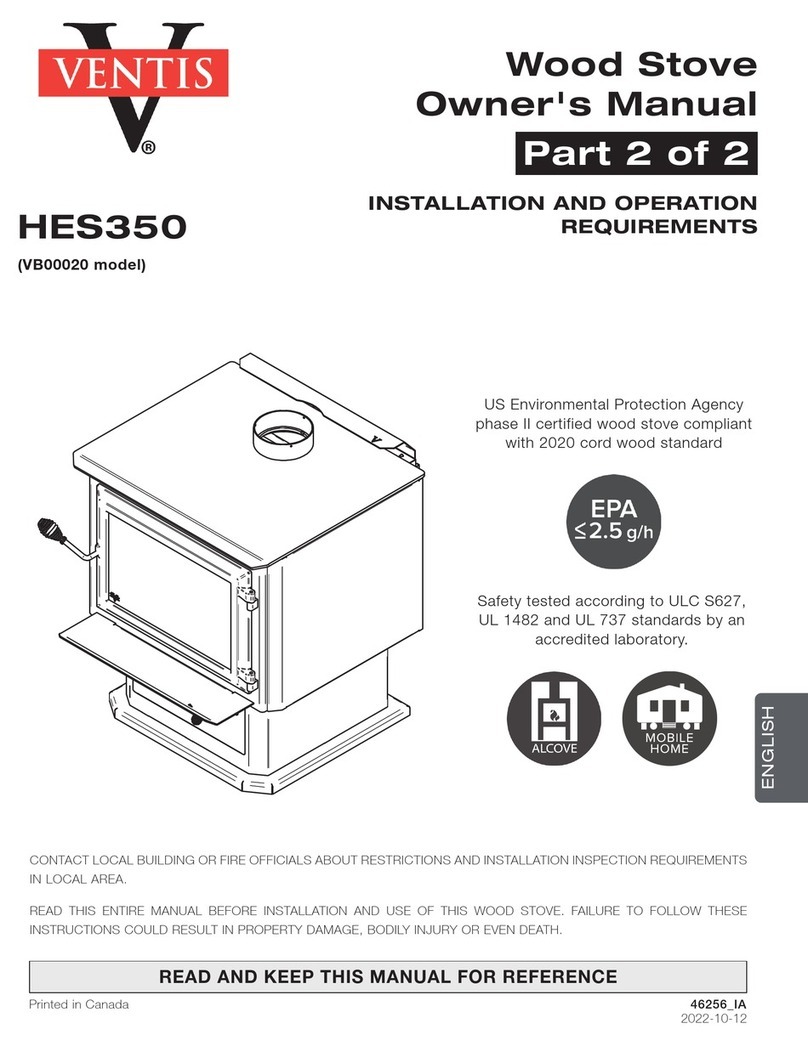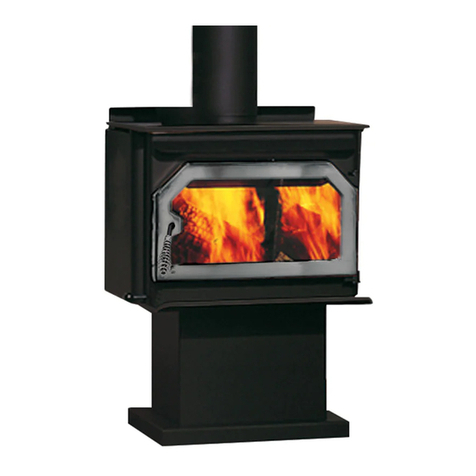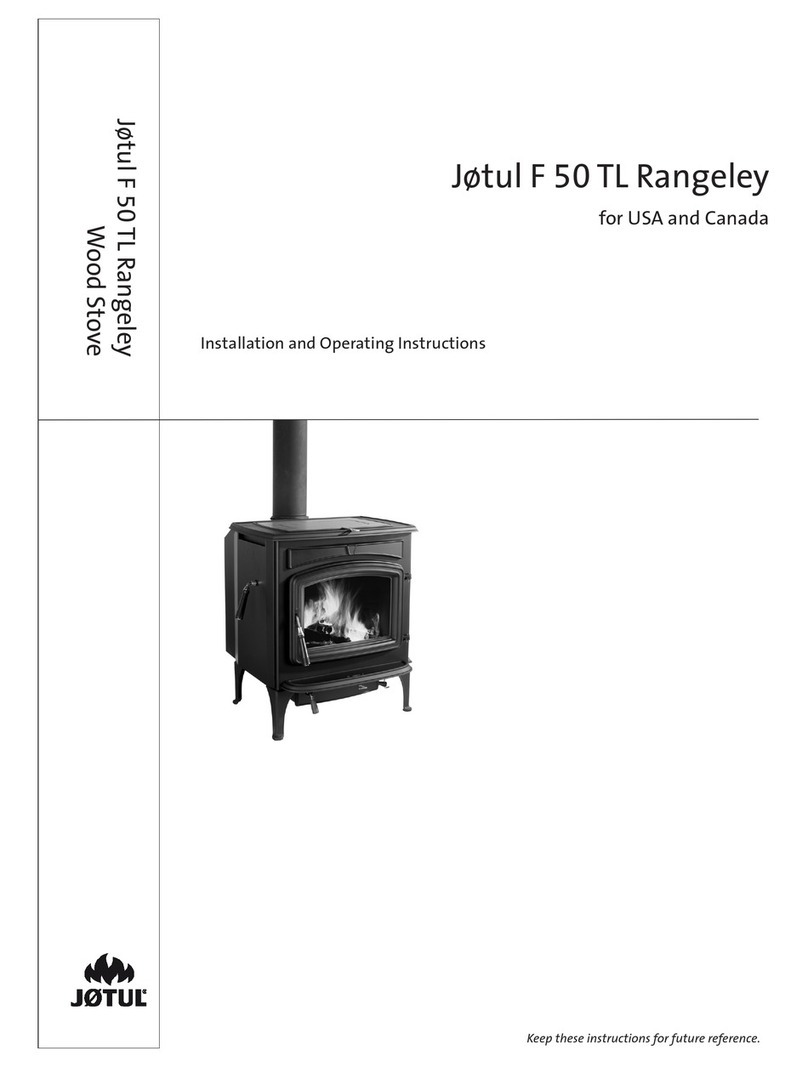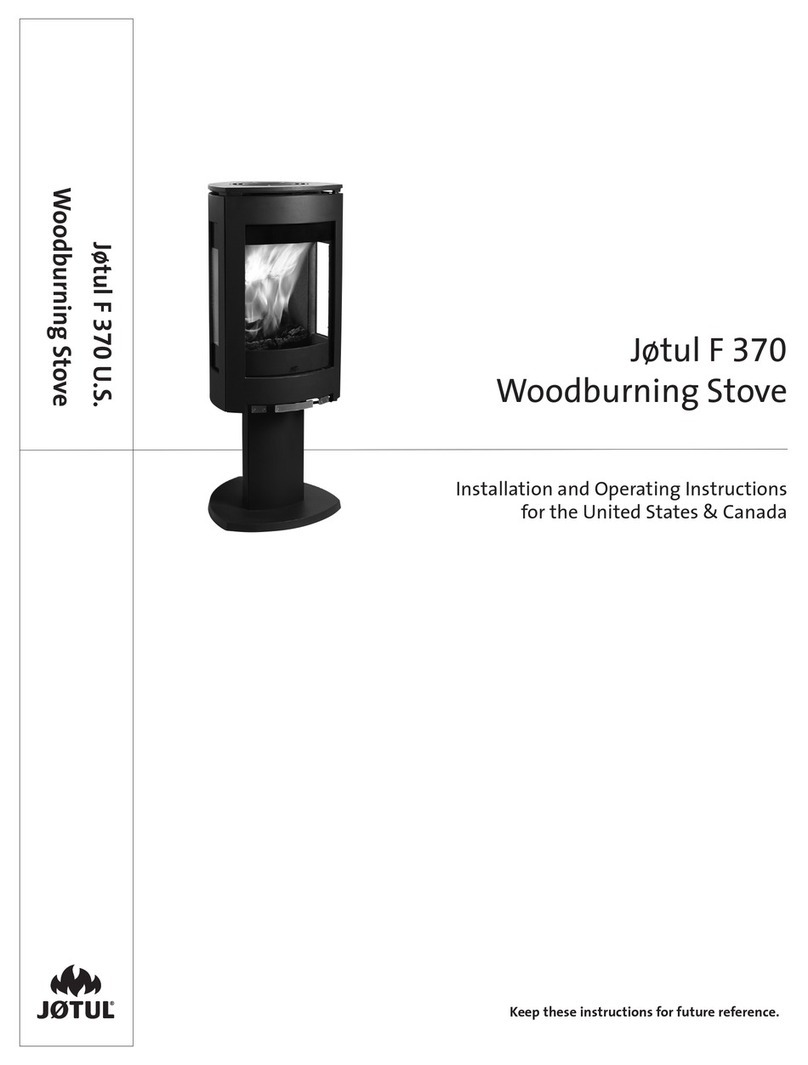
2
139967 F 45 V23/20
Jøtul F 45 V2Greenville
Accessories
Stove Gloves, pair - #157363
Flame-retardant, full length, Black.
Stove-Top Thermometer - #5002
We recommend the use of a magnetic stove-top thermometer
to monitor the surface temperature of the stove.
The optimum surface temperature range for the most
efficient performance is between 4000F - 7000F (2050C -
3160C).
Outside Air Kit - #157637
This kit includes a plenum assembly which attaches to the
stove bottom. It permits connection of duct work from
an outside source directly to the air intake of the stove. A
direct outside air connection is required for mobile home
installations.
Mobile Home Floor Bracket Kit - #157321
This kit includes two brackets used to fulfill the mobile
home requirement that the stove be secured directly to the
floor.
Blower Kit - #156431
This kit includes components for mounting a
thermostatically controlled 120 cfm blower to the back of
the stove to enhance heat convection into the living area.
Short Leg Kit - #157636
This kit includes four, 4 1/4” steel legs which allow stove
installation into a fireplace opening height as low as 26 1/4”.
Approved only for code-approved, masonry fireplace hearth
mount installation.
Table of Contents
Accessories ................................................................................... 2
Standards and Safety Notices
Standards / Codes ........................................................................... 3
Combustion Specifications ........................................................... 3
Safety Notices .................................................................................. 4
1.0 Installation
1.1. Unpack the Stove ................................................................... 5
1.2 Bottom Heat Shield Requirement ..................................... 5
1.3 Short Leg Installation ........................................................... 5
1.4 Leg Leveller Installation ....................................................... 5
1.5 Flue Collar Orientation ......................................................... 6
1.6 Flue Collar Heat Shield.......................................................... 6
1.7 Chimney Connector............................................................... 6
2.0 Chimney Requirements
2.1 Masonry Chimneys ............................................................... 7
2.2 Prefabricated Chimneys ....................................................... 7
2.3 Chimney Height ..................................................................... 8
2.4 Wall Pass-Throughs ............................................................... 8
3.0 Connecting to the Chimney
3.1 Masonry Chimneys ............................................................... 9
3.2 Hearthmount into a Masonry Fireplace........................... 9
3.3 Prefabricated Chimneys ....................................................... 10
3.4 Mobile Home Requirements .............................................. 10
4.0 Clearances to Combustibles
4.1 Floor Protection ...................................................................... 11
4.2 Alternate Floor Protection ................................................... 11
4.3 Clearances to Walls and Ceilings........................................ 11
4.4 Using Shields to Reduce Clearances.................................. 12
4.5 Alcove Installation ................................................................. 12
4.6 Fireplace Clearances, Mantel and Trim ................................ 12
4.7 Clearance Diagrams .............................................................. 13
5.0 Operation
5.1 Combustion Efficiency.......................................................... 14
5.2 CO Emissions .......................................................................... 14
5.3 Wood Fuel and Performance............................................... 14
5.4 F 45 V2Functionality ............................................................ 15
5.5 Air Control / Blower Settings .............................................. 15
5.6 Controling the Fire................................................................. 15
5.7 Break-in Procedure................................................................. 16
5.8 Starting and Maintaining a Fire ........................................ 16
5.9 Adding Fuel ............................................................................. 17
5-10 Creosote and the Need for Removal ................................. 17
5.11 Ash Removal............................................................................ 17
6.0 Maintenance
6.1 Door Latch................................................................................ 18
6.2 Glass Care................................................................................. 18
6.3 General Care............................................................................ 18
6.4 Gasket Replacement ............................................................. 19
6.5 Glass Replacement ................................................................ 19
6.6 Chimney System .................................................................... 20
6.7 Firebricks ................................................................................. 20
7.0 Appendix
7.1 Blower Installation ................................................................ 21
7.2 Outside Air Kit Installation ................................................. 23
7.3 Short Leg Installation ........................................................... 23
7.4 Mobile Home Floor Bracket ................................................ 24
7.5 Alternate Floor Protection .................................................. 24
7.6 Secondary Air Manifold / Turbulator Inspection ........... 25
7.7 F45 V2Start-Up and Refueling........................................... 26
8.0 Illustrated Part List ........................................................... 28
9.0 Warranty Statement ..................................................... 31
